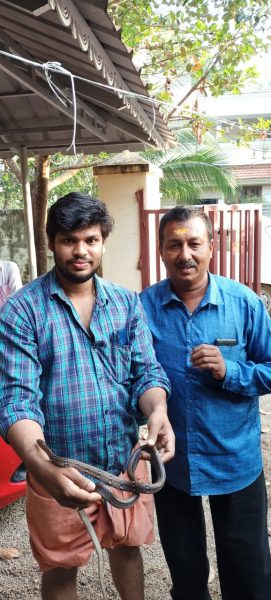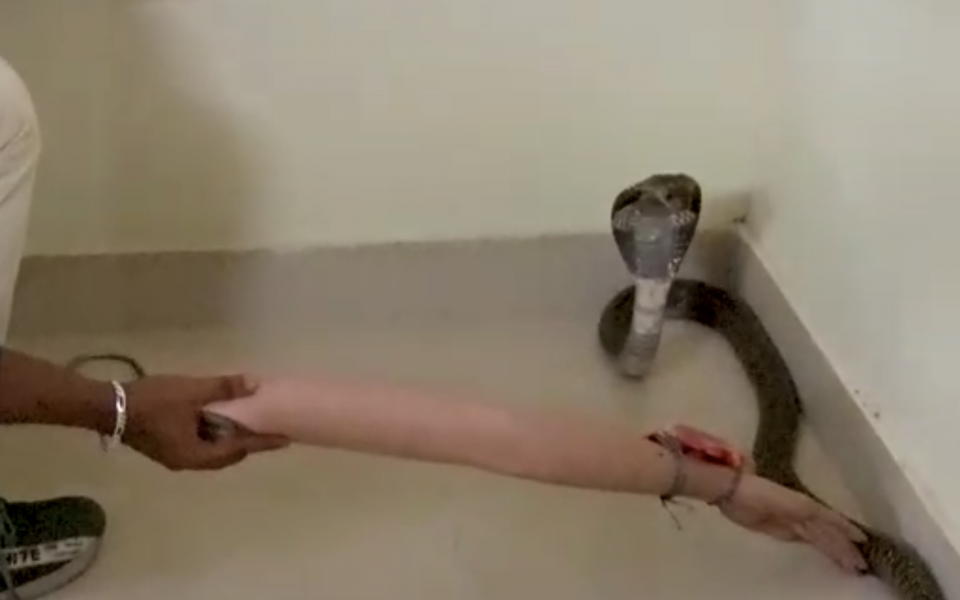
Cobra murder: How Kerala police nailed husband for wife’s death

When Suraj S Kumar, a native of Adoor, was found guilty of murdering his wife, the investigation that nailed him instantly became part of police lore in Kerala.
On May 6, 2020, Suraj’s wife, Uthra, succumbed to snakebite at her parents’ home at Anchal, Kollam. A cobra was found in the bedroom later and was clubbed to death. In the usual course, the case would have been buried as an accident – her death blamed on “the wrath of snake god”. Kerala records thousands of snakebites each year. Uthra had sustained a bite on March 2 2020, two months before her death. It was not cobra, but a viper. Two days earlier, on February 28, a snake was found beneath the staircase at their home.
Uthra’s father, Vijayasenan, did not buy the “wrath of snake god” theory; suspecting foul play, he went to the police. He met S. Harisankar, the then rural SP of Kollam, and requested an investigation. On May 7, the police filed a case of unnatural death. The autopsy confirmed that the cause of death was poisoning due to snake bite.

“There were several factors that led us to the preliminary assumption that it was not a case of an accidental snakebite,” Harisankar told The Federal.
“We had reasons to doubt that it was a well-planned and well executed murder. We discussed the matter with several experts in veterinary science and herpetology [ the branch of zoology concerned with reptiles and amphibians]. Some of the factors sounded strange…” he said.
The first bite (March 2) took place in the bedroom, on the first floor of Suraj’s house, and the doctors were clear that it was a Russell’s viper, Harisankar said. “A Russell’s viper is a non-arboreal species [not inhabiting or frequenting trees] and is rarely found in such places,” he said.
The second bite (May 6) took place at night, while Uthra was sleeping. “A cobra is generally active between 5 and 8 pm. It is highly unusual for cobras to be active late at night,” Harisankar said.
The doors and windows of the room were also shut as the air-conditioner was on that night, the officer said. “So the entry of the snake could not be rationally explained.”
The post-mortem found two puncture wounds in close proximity, 2.3cm and 2.5cm deep. Scientific studies show that the Indian cobra’s fang marks are typically less than 2cm deep.
“Punctures wounds caused by two successive bites should be of similar depth,” Harisankar said. “The variation [0.5cm] shows force was possibly used. If external force is applied on the head of the cobra, that would cause the fang to penetrate deeper. This led to the conclusion that the bites were not natural, but induced by someone skilled in snake-handling.”
Forensic experts conducted DNA test on the dead snake too, and established that the reptile was kept in a plastic bottle found in the house. (The DNA from the scales inside the bottle matched with the DNA of the cobra.
As there was also a history of domestic violence and dowry harassment by the family, the needle of suspicion turned towards Suraj. He was home when both incidents of snakebites occurred. He had a passion for wildlife and had been a member of wildlife clubs.
By this point in the investigation, the police had established that Suraj knew a man named Chavarukavu Suresh, from Kalluvathukkal in Kollam. Suresh told officers that Suraj had purchased two venomous snakes – one viper and one cobra – from him on dates corresponding to the snakebites. Armed with the knowledge, the police again interrogated Suraj, and he broke down and confessed.
Suraj married Uthra, who had a mild disability, with an eye on dowry. Soon he wanted to get rid of her, but did not want to go for divorce as that would have caused him financial setback. Thus he decided to eliminate her through a well-planned murder that would pass off as an accident. Being a wildlife enthusiast and an amateur snake handler, Suraj chose snakebite as the best option. In March he procured a viper from Suresh and dropped it on Uthra while she was sleeping. Uthra, however, woke up and screamed for help. Left with no choice, Suraj took her to the hospital and she survived.
Two month later he tried again, and succeeded. “Cobra venom is neurotoxic in character. It attacks the central nervous system, leaving the chance of survival quite low,” Harisankar said.
According to the police, before his second attempt, Suraj ensured that Uthra would not wake up. He sedated her with a toxic dosage of cetirizine mixed with fruit juice. In the cyber forensic analysis done on his mobile phone, it was found that he watched videos and read literature to learn the behaviour of snakes.

The police investigation brought together several disciplines – veterinary science, forensic medicine, herpetology, cyber forensics, DNA finger printing and even pharmacology. The investigating team even performed an experiment with a live snake. According to Harisankar, the experiment proved that successive natural bites of a cobra would result in similar puncture wounds, equal in depth to the length of the reptile’s fangs. It also proved that the wound would be deeper/bigger if external pressure is applied.

Suresh, who supplied the snakes to Suraj, turned police approver. He said he did not know Suraj wanted to kill his wife. The additional district and sessions court of Kollam found Suraj guilty. The quantum of punishment will be pronounced on Wednesday.
The case, the first of its kind in which the accused has been found guilty, has become a landmark in the history of law and order in the country. There have been two recorded cases of alleged snakebite killings before, in Maharashtra, but the prosecution failed to prove the guilt and the accused were exonerated.

